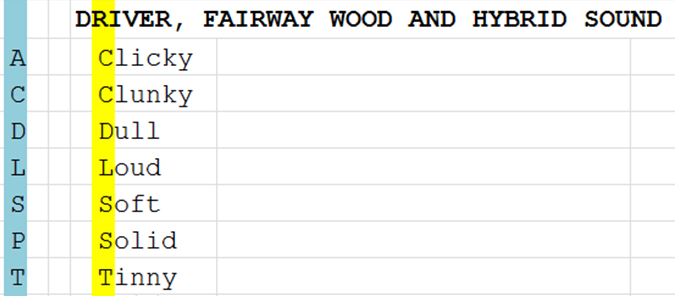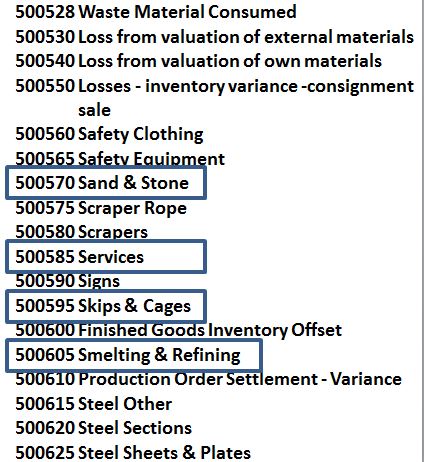| |
|
Links to previous articles at the end
of this article
| |

|
| |
|
This article introduces critical principles that every executive and
manager should know in order to be able to derive full value from their
business information systems investments. These principles apply
to your ERP and other financial systems, your business intelligence
systems and your general operational software systems.
These principles, correctly applied, will enable most organizations to
substantially improve the strategic and operational decision support
information yield of their business information systems facilitating
better decision making and more effective and more profitable enterprise
operation.
They are equally applicable to non-profit and governmental organizations.
This article discusses actions you can take immediately and other
actions that will require careful planning and whose implementation will
take some time. It headlines a number of typical problem areas
and steps to correct them. Further articles are planned that will
define the fundamental principles that underpin the application of these
recommendations and provide recommendations with regard to
implementation.
Factors which will indicate whether it is worthwhile to read this article include:
|
| |
|
Ten steps you can take to strategically enrich your business information systems
These notes apply to differing degrees to every module of every
business information system from every software vendor on the
planet. They do not relate to technology, they relate to how
information is organized to make maximum sense to human beings and in
order to facilitate maximum ease of electronic processing.
They relate to principles that are well understood in certain quarters
but hardly understood, or if understood, imprecisely applied in the
majority of business information system installations. These
factors are the most significant factors behind Gartner's finding that
"most organizations are not making better decisions now than they did
five years ago".
These suggestions apply whether we are speaking of financial
transactions or product records, whether we are dealing with the General
Ledger Chart of Accounts, the Product Class, the Item Master, the
Materials Group, Personnel Class or any other database table large or
small in any system.
I will primarily use examples from the Chart of Accounts as this is
more universally applicable than any other information list and any
other Master Data.
Many technologists will look at what is presented here and tell you
"but FRED (the name of your system), is so powerful it can handle
this!" Do not listen to them, this is not about technology it is
about organizing information in meaningful ways that accurately model
the real world so that the full potential of the technology can be
unlocked and the data is easily and quickly interpreted by managers and
executives.
If you follow the steps set out below and systematically and
progressively apply them to your systems you will find in a few years'
time that you are getting much more information faster and easier and
that your business is running smoother and better. You may even
find that some of your mid-level administrative personnel are much more
gainfully employed or that somehow the headcount has reduced without you
really planning it.
|
| |
|
The principal requirements of executives
In considering what follows I suggest that the principal requirements
of executives for any business information system include:
-
The answers to questions I have not yet thought to ask;
- Enable me to run the business
MY way;
- Accurately model every aspect
of my business;
- Totally integrated solution;
- Entirely reliable and
dependable;
- Fundamentally support the
essence of the business and how it thrives (strategy);
-
Fully support my day to day operational functions
What is presented here is designed to assist you to reach the above goals.
All that follows relates to the classification lists, attribute lists,
Chart of Accounts and other classification and grouping lists that exist
in all software to varying degrees. These are the classifications
that are used to order, group and analyze data. If they are well
structured, well designed and well maintained the software is a pleasure
to use, if not ...!
I stress that this information is relevant at the executive and senior
manager level -- once you understand the real issues then you can manage
the problems referred to above out of your systems.
|
| |
|
1. Ambiguous item names
Account or item names are ambiguous resulting in different personnel
posting differently e.g. "Smelting and refining" -- Asset or
Expense? Clean up the lists and make names unambiguous "Smelting
and refining operating expenses".
|
| |
|
2. "Clumping" of transactions
A single item or account covers substantial numbers of diverse
transactions monthly e.g. the "Smelting and refining operating expenses"
example above is a £100 million asset with hundreds if not thousands of
expense transactions monthly. Break this down into five to ten
major categories and, in this particular case, break each of those down
into between five and ten categories. Assemble this into a very
carefully designed hierarchical list (taxonomy), code it using
structured codes and immediately you will be able to analyze your
expenses much more exactly.
The level of detail should model the real world at the finest level of
detail that you will ever ask questions on. The computer can only
drill down automatically to the finest level of detail that you capture
and maintain and it can only group automatically to the extent that
there is logic in your code scheme. Well-designed lists and codes =
easy to post accurately, easy to analyze, electronic drill down and
summarization. The opposite = lots of manual work in Excel or
complex reports or both.
Consider
the following real world example:
|
| |
|
Typical Credit Note Reason Codes
They look reasonable ... don't they?
|
| |
|
Versus Strategically and Systematically Designed Reason Codes
With the first list you will struggle to answer most management
questions, with the second you will answer almost any conceivable
management question -- same software, same business, different classification data.
|
| |
|
3. Cannot get answers to simple questions easily
The example above gives you the answer. Survey your staff, find
out where they are struggling to get answers, examine the classification
lists, make changes in line with the example above. I intend to
give more guidance on how to do this in subsequent articles.
|
| |
|
4. The information you need is not there
 |
|
| |
|
You are asking questions that are important, for example with regard to
market trends, and you cannot get the answers without putting a fairly
senior person onto spending days with Excel and direct research to
arrive at an answer that no-one has confidence in.
Add the relevant characteristics to the master data e.g.
buying patterns for golf clubs are influenced by the sound they make
relative to the sound of the clubs used by the top players on the
circuit. Fashions change and it is desirable to monitor trends. Add
"Golf Club Sound" as an attribute on your Product Master record -- an hour
or two to add the attribute to the database, some days to classify all
the products and immediately you have real time tracking of trends for
ever at almost no extra cost. Just make sure you do the job
properly first time -- the Engineering Approach!
You can quickly and easily add any number of attribute lists to your
master files in this way and with a bit of effort you can classify all
your products and capture the extra data. This applies to
personnel data, to production data, to equipment spares, you name it you
can add attributes and it costs almost nothing to do this relative to
what you have spent in total on your systems thus far. And the
return on investment is very substantial!
Vital to do this to a high standard or rigour and precision in order to experience the full return.
The key question to executives and senior managers should be
"what are ALL the possible attributes that you can possibly think of to
describe a ... (e.g. golf club)" -- brainstorm, classify and, if in doubt, add it
anyway.
|
| |
|
5. Duplicate items
Quite frequently different departments define their own sets of
classification codes to suit their purposes. For example I once
found an Item Master where exactly the same earth moving machine tyre
occurred in three different places.
Evaluate the logic of the list, select a single instance of the item
and close the others down. If you keep getting incomplete reports
or reports from different departments do not agree this is frequently
the answer.
|
| |
|
6. Lots of spreadsheets with manual manipulation
You have a significant number of mid-level and even senior staff with
spreadsheets producing the monthly Board Pack and other management
reports. When you question the numbers the query has to cascade
down through the ranks until the operator at the bottom extracts
required data and the hierarchy of managers and accountants process the
data back up through their spreadsheets. Expensive, frustrating
and a total waste of time.
Look at the data that is giving the problems and develop overarching
logical code schemes from first principles that accurately model the
real world. Introduce these into the Transform layer of a new
instance of your data warehouse and transform the data into logically
structured hierarchical classifications that you can roll up
electronically. A significant project but will give substantial
benefits and probably reduce administrative costs. I plan to
discuss how to do this in more detail in future articles.
|
| |
|
7. Different departments have different definitions
I once came across a large multi-national organization
where operations, finance and human resources had three different systems
-- SAP in the finance domain, another instance of SAP in the human resource
domain and a completely different operational system used by those who
actually produced the output of the business. The employee
classification and grouping in the three systems did not agree at all to
the extent that even the most elementary employee category related
analysis was to all intents and purposes impossible. It is vital
to have a single harmonized standard across the enterprise, this
standard needs to be driven from the office of the Chief Executive as
the custodian of the integrated view of the business and must be
extremely well engineered to the highest standards of what I am
advocating here. Once in place huge benefits will result.
|
| |
|
8. Cannot correlate measures of customer satisfaction with the hard data
Soft measures like customer satisfaction, employee satisfaction, etc
are seldom correlated with actual production and sales data for all of
the reasons given above and others.
Modify your customer satisfaction instrument (questionnaire post card,
etc) so that it is issued in such a way that it has a unique bar code or
other identifying code discreetly printed or in some other way linked
back to the specific transaction associated with the issue of the
questionnaire. Scan the results back into your system and use the
unique code to join the customer satisfaction data with your operational
data. You will immediately be able to monitor performance of a
wide range of matters electronically in ways you previously might only
have dreamed of.
|
| |
|
9. Your major lists are badly structured and a nightmare to navigate
 |
|
| |
|
Point 6 above will start pointing you in this direction.
Critically examine your Item Class, Product Class, Material Group,
Employee Group, Chart of Accounts and other major lists in the light of
what you read here and what I plan to share with you in the months
ahead. My experience tells me that you will almost certainly
discover that they are extremely badly organized with little or no
logic, innumerable haphazard groupings, if there are any groupings at
all.
If you dig further you may well find that it takes ages for new staff
to learn how to post accurately, that new staff may even give up and
leave, that posting errors are prevalent, that supervisors and even
managers expend significant time working around the badly ordered data,
that no one actually trusts the data and that the people who get the job
done rely on their own pieces of software and spreadsheets outside of
your core systems.
The extract from a Chart of Accounts shown here is an example of an
extremely badly designed Chart of Accounts, so much so that the client
was running their business almost entirely with Excel.
Interestingly the software vendor told me that his software, call it
FRED, "is so powerful it can handle this data". The client failed
to take my advice and is now in Business Rescue.
The answer is not to buy new software, it is to build
new classification lists -- by doing this you will dramatically raise the
quality of management information and realize the true value of your
systems. This is a classic example of the underlying
fundamental behind "most organizations are not making better decisions
now than they did five years ago."
|
| |
|
10.
Allocation of overheads to production business units is approximate and
highly manual and financial reporting generally is cumbersome
Finally you may find that the allocation of overheads is a source of
contention and uncertainty. You may find that your managers are
managing off Excel spreadsheets with little or no regard to the
financial system. In extreme cases you may find that from an
operational point of view only the Accounts Department and the Auditors
really make use of the Financial Suite. You may also find that the
audit costs much more than you would like it to and takes much longer
than you think it should. Look no further than a badly designed
Chart of Accounts that does not accurately model the real world with
numerous management journals that have no place in the core financial
records.
A Chart of Accounts should accurately model the business in a
sophisticated compound code scheme that incorporates every element of
the business in distinct code segments comprising Divisions, Locations,
Functions and Accounts. These are fundamental logical entities
with information management rules as hard as concrete that must be
rigorously and precisely defined in highly structured hierarchies and
coded to engineering standards of precision. I use custom
developed software to ensure the consistency of the code scheme when I
build such Charts of Accounts. Be aware that people will tell you
that their Chart of Accounts complies with what I have just said.
In my experience they almost never approximate the level of engineering
rigour that I regard as non-negotiable.
This model then forms the basis of how the entire business is
represented to the diverse computer systems that form the administrative
backbone of every organization. Application of this approach can
take place in the Transformation layer into the Data Warehouse and, in
time, the operational Financial Suite can be reimplemented.
|
| |
|
To follow
I aim to follow this article with further articles discussing in detail
the principles to be applied in this field of Strategic Information
Architecture.
I also aim to provide guidance on the approach to be used in implementing these recommendations.
|
| |
|
Conclusion
| |
 |
| |
|
If you recognize that there is NOTHING more important than the
configuration data that we have been talking about and that, correctly
addressed, remediation of all the above items can make a huge
difference. And your recognize that this should be undertaken to
high standards of precision, as you would in any engineering endeavor,
you will open the door to add very substantial value to your
organization and unlock huge value from your existing business
information investment.
A hundred fold increase in information value is entirely achievable
and, coupled to this, greatly improved management efficiency and
business competitiveness leading to increase profitability and growth.
I offer advisory services with regard to the application of these
principles and would be delighted to discuss how I might be of
assistance. I also offer a light touch diagnostic service to
evaluate the state of your information tables and advise how to
remediate them.
Yours faithfully
Dr James Robertson PrEng
|
| |
|
|
|